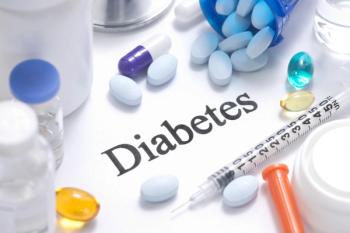
Modernizing health care communications drives collaboration and profit
Better communication leads to better care quality and less staff burnout
When the average person thinks of a modern hospital, they likely picture MRI machines, state of the art operating rooms and other glamorous technologies. Most likely, their mental image of a modern hospital doesn’t include pagers or fax machines--technologies rooted in the 1980s.
Yet, the reality is that many hospitals don’t make full use of “modern”
It’s not just time being wasted. Revenue evaporates as beds and operating rooms can’t be turned over fast enough, or it walks out the door when patients storm out of the ED tired of waiting. In fact, the National Institute of Health (NIH) estimates that there is $12 billion wasted each year because of inefficient communication.
The unfortunate truth is that many – if not most – hospitals are not modern communications environments. That can be very frustrating for staff when they’re trying to connect with the right person, such as a consulting physician or the hospitalist to get a patient admitted from the ED. Modern health care relies on a team of dedicated professionals collaborating through an orchestrated clinical workflow. Many of those steps are interdependent and rely on making connections with people, resources, and data at the right moment.
The fragmented communications environment frustrates that collaboration. It contributes to burnout among staff and
Health care is a team sport, and communication is vital to efficient workflows. Better communication leads to more efficiency, which means better care quality and better financial health for the institution.
The modern communications environment
The irony is that outside of their jobs, hospital staff are awash in a modern communication environment. Their phones deliver synchronous, asynchronous, and multi-modal content (text, voice, video) all the time. They know all too well that it’s usually easier to order a delivery pizza through their phone than it is to get a consult from the ED.
Modern clinical communication and collaboration platforms can replicate that environment within the hospital setting. They can seamlessly integrate with existing electronic health records and clinical systems, empowering care teams with real-time patient information for faster collaboration and interventions.
These platforms come equipped with features such as role and team-based messaging and customizable notifications that can be filtered and intelligently routed to the right individual or care team. With the most advanced platforms, knowing the name of the team member you’re reaching out to isn’t necessary; you simply need to know their role such as hospitalist or charge nurse. By integrating with scheduling systems, the right person receives the alert. Teams can be pre-set, such as “multidisciplinary rounds,” or created on the fly to reflect the reality of patient and staff needs at the moment. Critical care teams such as Sepsis and Code Blue teams can be activated as a group to speed their activation and delivery of urgent care when needed.
The result is improved communication efficiency, minimized alert fatigue, and ultimately, an enhancement in patient care—all facilitated through one platform used by everyone. And “everyone” can include team members that are outside the four walls of the hospital in other facilities or support agencies such as home health care services.
This more modern communication environment also enhances the financial position of our struggling health care system. These platforms add leverage to the investments hospitals make in other tools such as the EHR or scheduling systems. By interoperating with all these other systems, clinical communication and collaboration platforms unite the main tools clinicians use even though these other tools can often exist in silos.
Nurses and all health care providers are constantly updated on patient details, test results, and treatment plans, regardless of where they are or what department they belong to. By adding administrative and support staff, the patient’s journey can be streamlined from admission to discharge. That frees up capacity for more revenue opportunities.
The modern team approach in health care
Health care has many moving parts. Yet far too many environments are not actually built to enhance collaboration. They rely on anachronisms like pagers or niche tools such as the texting utility bolted onto the EHR. Communication practices and methods are fragmented across too many tools that don’t necessarily interoperate or touch all the right people at the same time. Our dedicated professionals are paying the price for this inefficiency through frustration, anxiety, and burnout.
Clinical communication and collaboration platforms take modern communication technology and tailor it to health care. Teams are actively engaged in moving a clinical workflow forward rather than waiting for a callback. Collaboration among caregivers is the only path to success for patients and, ultimately, the financial health of our institutions.
Will O’Connor, M.D., is the chief medical information officer at
Newsletter
Stay informed and empowered with Medical Economics enewsletter, delivering expert insights, financial strategies, practice management tips and technology trends — tailored for today’s physicians.


















